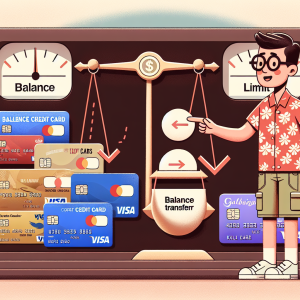Balance transfer credit cards can be a financial lifesaver when used correctly. They offer a way to consolidate high-interest debt onto a single card with a lower interest rate, often reducing monthly payments and saving money on interest. However, understanding the intricacies of these cards, especially the limits and fees associated with balance transfers, is crucial to leveraging their benefits effectively. This article delves into the key features of balance transfer credit cards and provides a comprehensive guide to understanding balance transfer limits and fees.
Key Features of Balance Transfer Credit Cards
Balance transfer credit cards are designed to allow consumers to transfer high-interest debt from one or multiple credit cards to a new card with a lower interest rate. One of the most enticing features is the introductory 0% APR period that many of these cards offer. This period can range from six months to as long as 21 months, during which no interest is charged on the transferred balance. This can provide significant relief for those struggling with high-interest debt, giving them a window to pay down the principal without the pressure of accumulating interest.
Another important feature is the limit on the amount of debt that can be transferred. Each credit card issuer has its own policies regarding balance transfer limits, often tied to the credit limit of the new card. For instance, if a card has a $10,000 credit limit, the balance transfer limit might be $7,500 to $10,000, depending on the issuer’s terms. Understanding these limits is crucial to effectively consolidating debt and ensuring that the card can handle the full amount you wish to transfer.
Balance transfer credit cards also come with their own set of terms and conditions, including fees and penalties. It’s important to read the fine print to understand the costs associated with the transfer. These fees can include balance transfer fees, which are typically 3% to 5% of the amount being transferred, and late payment penalties. Some cards may also revert to a higher interest rate if a payment is missed during the introductory period. Being aware of these terms helps in making an informed decision and avoiding unexpected costs.
Understanding Balance Transfer Limits and Fees
The balance transfer limit is a critical aspect to consider when choosing a balance transfer credit card. This limit is usually a percentage of the credit card’s total limit and can vary significantly between different issuers. For example, if your new card has a credit limit of $10,000, the balance transfer limit might be set at 75% to 100% of that amount. It’s essential to inquire about these specifics before applying, as transferring more debt than the limit allows can lead to complications and may leave you with fragmented debt spread across multiple cards.
Fees are another important factor to consider. The most common fee associated with balance transfer credit cards is the balance transfer fee, which typically ranges from 3% to 5% of the transferred amount. For instance, if you transfer a $5,000 balance and the fee is 3%, you’ll pay an additional $150. While this might seem like a small price to pay for the benefit of a lower interest rate, it’s important to factor this cost into your overall debt repayment plan. Some cards may offer a $0 transfer fee during an introductory period, which can be an excellent opportunity to save money.
In addition to the balance transfer fee, other potential fees include annual fees for the credit card itself, late payment fees, and penalties for exceeding your credit limit. Some cards may also have higher interest rates after the introductory 0% APR period ends, which can significantly affect your repayment plan if the balance is not fully paid off by then. Understanding all these fees and how they add up over time is crucial to making the most of a balance transfer credit card and ensuring it serves as a tool for financial relief rather than an additional burden.
In conclusion, balance transfer credit cards can be a powerful tool for managing and reducing high-interest debt, but they come with their own set of rules, limits, and fees. By understanding the key features of these cards, such as the introductory 0% APR period and the balance transfer limits, consumers can make informed decisions that maximize their financial benefits. Additionally, being aware of associated fees, including balance transfer fees and potential penalties, is essential to avoid unexpected costs. With careful planning and a clear understanding of these elements, balance transfer credit cards can provide a path to financial stability and debt relief.
